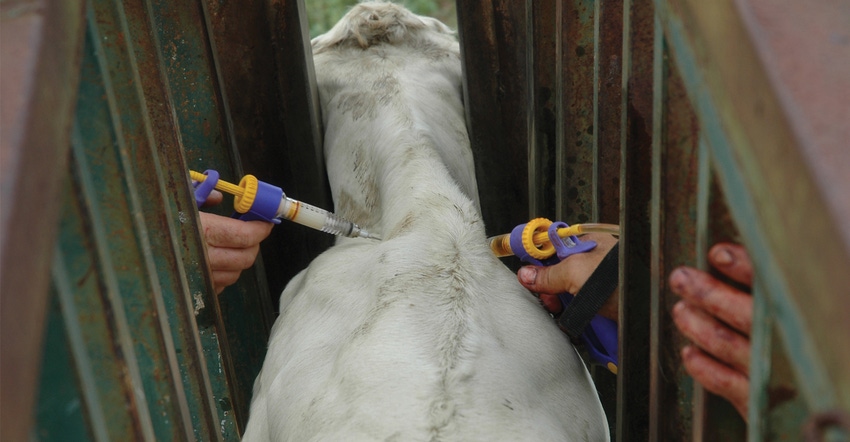We're not there yet, but the end of over the counter antibiotics for your livestock is just around the corner. Here's what you should do to prepare.
March 10, 2020

We are a few years away from the end of over-the-counter (OTC) antibiotics.
The understanding of the best approaches to antibiotic use and the implications of this use continue to evolve. This understanding is subject to multiple viewpoints, and also uses (and misuses) for marketing competitiveness.
Regardless of the dust clouds stirred up by this commotion, it is clear to see through to one obvious endpoint; all uses of medically important antibiotics in animals will be only under the authorization of a licensed veterinarian as provided for by either a veterinary feed directive (VFD) or a prescription.
In September, the Food and Drug Administration Center for Veterinary Medicine (FDA CVM) released draft Guidance for Industry (GFI) document No. 263 for comment. This guidance document relates to the remaining OTC antibiotics for food animals. It has a long title: “Recommendations for Sponsors of Medically Important Antimicrobial Drugs Approved for Use in Animals to Voluntarily Bring Under Veterinary Oversight All Products That Continue to be Available Over-the-Counter.”
The GFI No. 263 document mirrors the approach of GFI No. 213 (finalized in 2013), which outlined a process for removal of claims for improved efficiency or improved rate of gain from medically important antibiotics used in food animals. GFI No. 213 also outlined the process for moving the remaining in-feed antibiotic labels for medically important antibiotics to require a VFD, as well as moving all labels for medically important antibiotics administered through the water to require a prescription.
This process was completed in December 2016 with implementation of the revised labels on Jan. 1, 2017. The use of OTC injectable or intramammary products was not addressed in GFI No. 213.
Both GFI No. 213 and GFI No. 263 stem from the principles outlined in yet another GFI document, GFI No. 209, finalized in 2012: “The Judicious Use of Medically Important Antimicrobial Drugs in Food-Producing Animals.” There, the FDA outlined two key principles:
Limit medically important antimicrobial drugs to uses in animals that are considered necessary for ensuring animal health.
Limit medically important antimicrobial drugs to uses in animals that include veterinary oversight or consultation.
The first step was GFI No. 213. The FDA is now considering comments prior to releasing the final version of GFI No. 263. The final version of GFI No. 263 will be followed by a two-year period for voluntary implementation of the actions specified in the document. The timeline is not yet clear, but it is anticipated that the label changes could be accomplished sometime in 2022 or 2023.
All these steps are consistent with the five-year action plan for supporting antibiotic stewardship in veterinary settings released in September 2018. In this plan, it’s clear the FDA CVM intends to move the use of all medically important antibiotics to use under veterinary oversight, meaning either a VFD or a prescription will be required for purchase and use. The FDA CVM is also evaluating the durations of use for some antibiotics that have no specified duration of use on their labels.
The purchase and use of non-medically important antibiotics will continue to be allowed without veterinary authorization. Examples of non-medically important antibiotics include the ionophores monensin, lasalocid, and laidlomycin. I anticipate an updated list of the medically important antibiotics in the near future, updating the list in GFI No. 152, Appendix A, released in 2003.
That is a lot of GFI documents and lots of changes over the last decade, with more to come. Expectations for knowing what antibiotics are used, and how they are used, are rising.
In my opinion, you should anticipate that in the future, you will be required to document your antibiotic use practices in order to sell your animals into a large part of the market. Part of that documentation will be written protocols documenting your antibiotic use strategies as developed by you and your veterinarian.
Now would be a good time to start those conversations, if you aren’t already there.
Apley, DVM, Ph.D., is a professor in clinical sciences at Kansas State University in Manhattan.
About the Author(s)
You May Also Like





